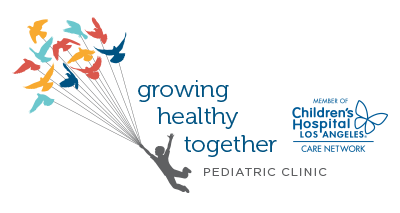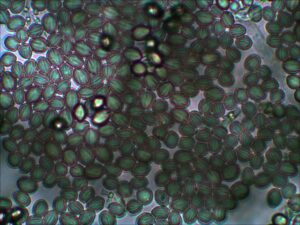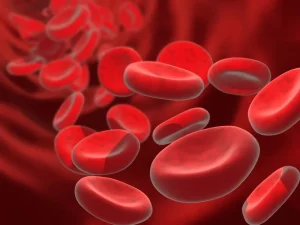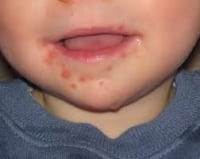
What is Perioral Dermatitis?
Perioral dermatitis (or periorificial dermatitis) is a type of skin disorder characterized by rashes or papules that typically affect the area surrounding the mouth. People with perioral dermatitis develop facial rashes that closely resemble and are mistaken for acne. For example, someone with perioral dermatitis may have inflamed red bumps, pustules, and/or burning and itching sensation at the affected site just like acne. It is most common in women aged 19-40, and children aged 7 months to 13 years.
Researchers have found that perioral dermatitis in children may eventually turn into rosacea in their adulthood. Rosacea is a more common skin disorder than perioral dermatitis as it affects 3 million individuals in the US every year. Nose and cheeks of middle-aged women are the areas predominantly affected by rosacea. Therefore, it’s important to treat perioral dermatitis in the early stages of life as it may give rise to rosacea in later stages.
Seborrheic dermatitis is another skin disorder that may be confused with perioral dermatitis. If your child has flakes behind the ears or in the eyebrows, they may have seborrheic dermatitis or seborrheic eczema. Children with seborrheic dermatitis will have flaking skin on the scalp, behind the ears, or on the face.
Be sure to visit your concierge pediatrician to rule out some bacterial infections that can also produce the same sign and symptoms. Skin ailments can be very different, so it’s important to get an expert opinion. Your pediatric healthcare provider can refer you to a dermatologist that can better determine what the underlying causes of skin problems are in your child.
Potential Causes of Perioral Dermatitis
Although it has been suggested that topical, oral or nasal steroids may cause the disorder, the exact cause of perioral dermatitis is still unknown. Some studies also suggest the following as causes for perioral dermatitis: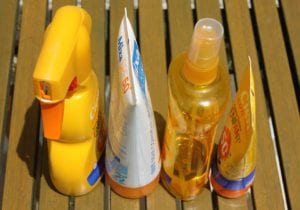
- Cosmetics
- Sunscreen
- Fluorinated toothpaste
- Hormonal changes
- Unclean skin
Check with your pediatrician or physician to find out more.
Natural Remedies For Perioral Dermatitis: Best Treatments
Perioral Dermatitis Precautions
Stopping the topical steroids or creams: Even though they may take several weeks to show their effects, it’s best to stop them immediately. Switch to a milder topical treatment, cleansing soap, or just water to keep the skin clean. To avoid further irritation and inflammation, do not scrub the skin.
Oral and topical medications: Oral medications such as Azithromycin, Erythromycin or Metro Gel and other oral as well topical antibiotics can help clear up the perioral dermatitis.
In any case, talk to your pediatrician or physician before stopping or starting any medication. Work with your doctor to figure out the best treatment plan or check out the suggested natural remedies below to see if they work for you.
Natural Remedies for Perioral Dermatitis
Here are the natural remedies that have shown remedial effects when used for treating perioral dermatitis.

Apple Cider Vinegar
Apple cider vinegar is a natural anti-inflammatory remedy, which makes it an effective treatment for relieving the inflammation, irritation, or redness associated with dermatitis. The compound is also antibacterial, so it eliminates infection-causing toxins both in and on the skin. Apple cider vinegar is rich in necessary vitamins and minerals that can replenish the health and vitality of the skin.
To use this remedy, mix apple cider vinegar with water and apply to the face. Leave on for 15 minutes, then rinse with water.

Grapefruit Seed Extract
The grapefruit seed extract is an effective treatment option for a variety of reasons. For instance, as an effective skin cleanser, the extract removes toxins and bacteria from the face. Additionally, the oil is also antibacterial, so it eliminates the infection from the skin and body and treats the condition from the inside out.
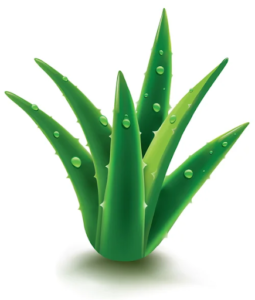
Aloe Vera
Aloe vera is another natural anti-inflammatory remedy that works to calm and soothe the skin. When used daily, aloe vera relieves the skin of any inflammation or pain and prevents additional redness.
As with skincare and life in general, it’s important for you to teach your little ones healthy habits such as:
- Treating your skin well by eating well
- Drinking plenty of water
- Using quality products with no harsh chemicals
Visit your Long Beach pediatrician for expert opinions on your child’s skin health. If you have any questions or comments, please respond to this blog or contact us.
